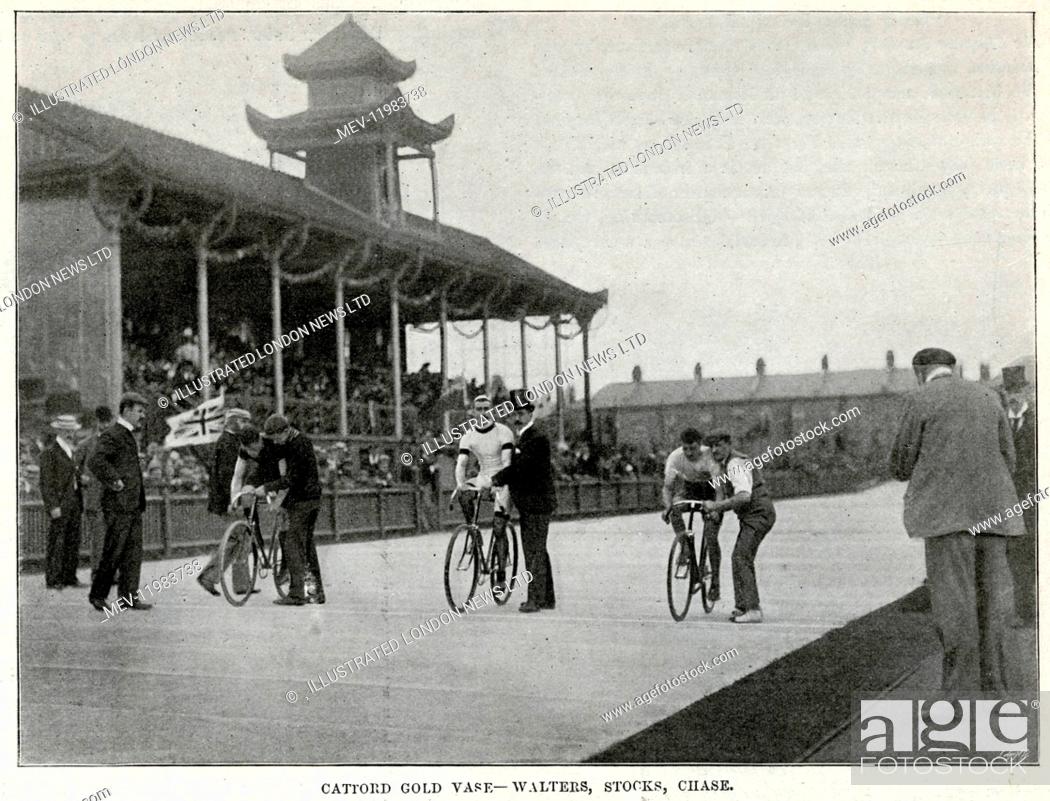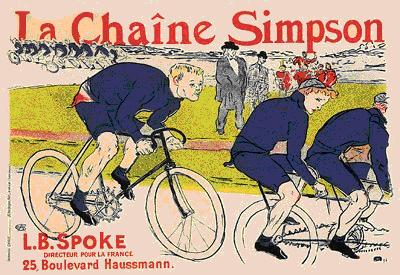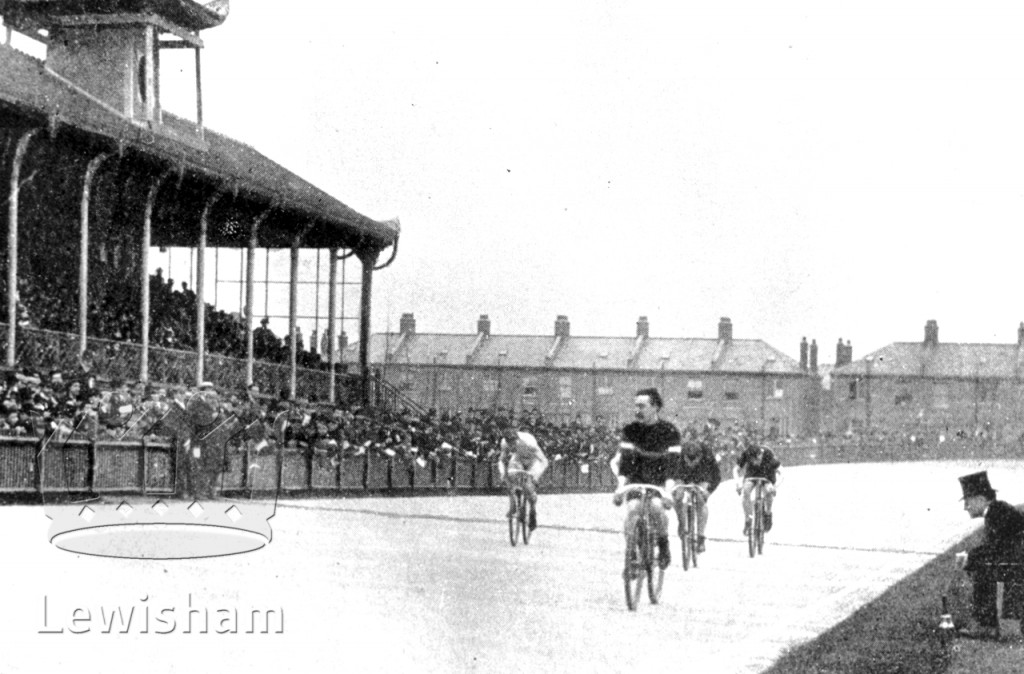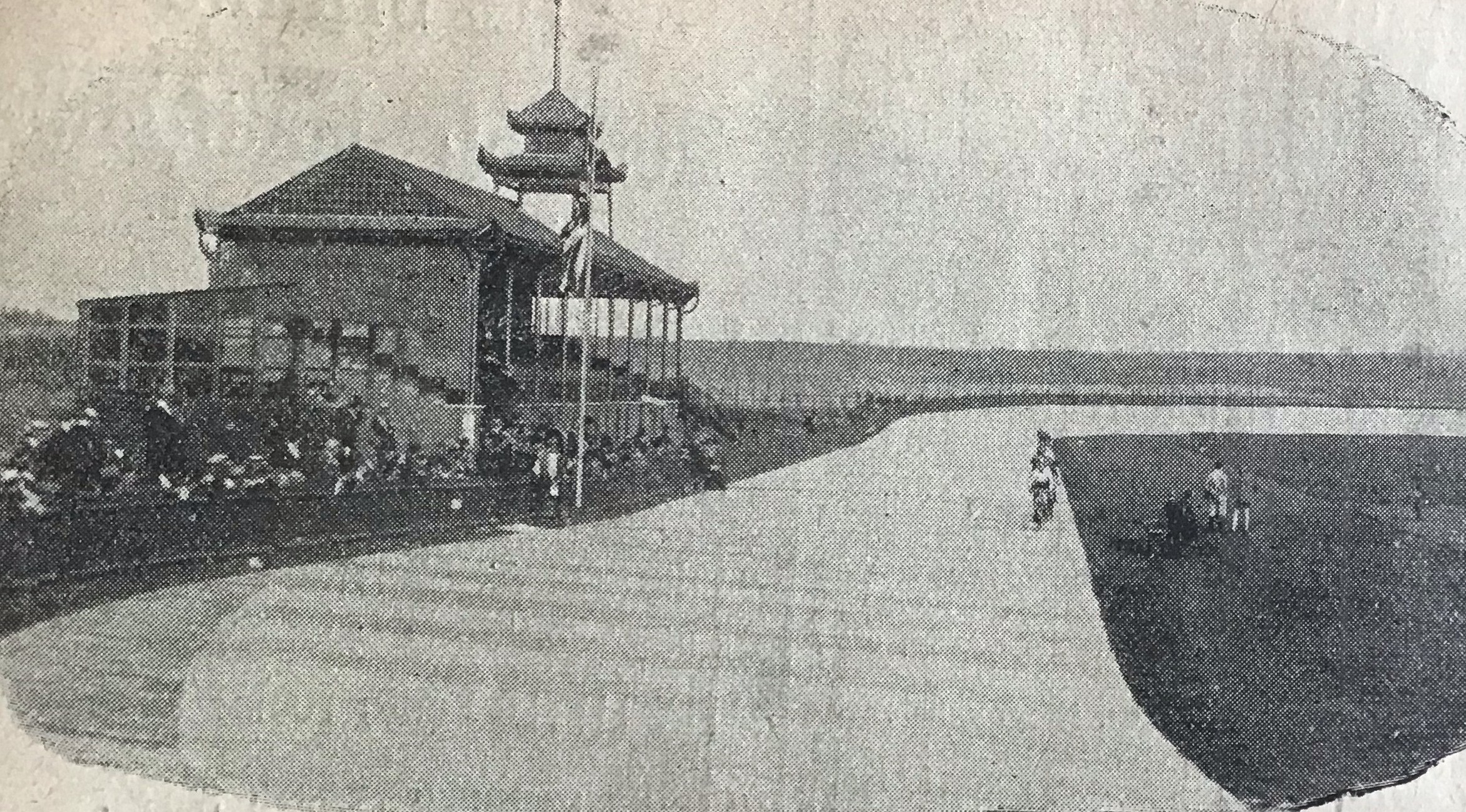

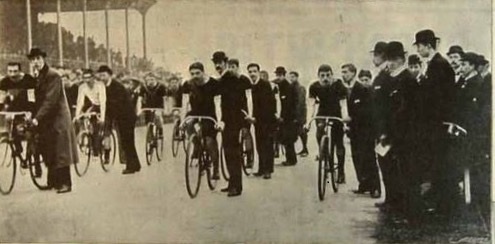
Catford was the home of Catford CC who had 300 members and Blackheath Harriers who had 250 members. The Catford Club was the strongest track racing club in Britain with branches in Paris, Bristol, Cardiff and Nottingham. When the track opened in 1895 it was probably the most important track in the UK and quickly attracted top quality racing.
The opening meeting on May 18th 1895 saw a crowd of 13,000 despite the dull, windy weather. In the racing, Chinn won the quarter mile scratch race and beat the UK record twice. In the one mile tandem race, AJ Watson (Polytechnic) and J Platt-Betts (Catford) won and set a new world record time for the last quarter mile. The opening meeting confirmed Catford as the fastest track in the country. Many other records were broken in 1895, Charlie Barden beat all world records from 2 miles to 10 miles, Jack Stocks took the hour record and tandem records from 1 mile to 24 hours were broken.
Record breaking rides at Catford continued throughout 1896 with large crowds and all the top riders. Arthur Chase broke the hour record, then Tom Linton bettered it with 31 miles 5 yards, Jack Stocks established a new world 10 mile record of 19 min 30.8 sec.
The famous ‘Chain Matches' took place at Catford in June 1896. The Simpson lever chain was designed by William Spiers Simpson in 1895 as an alternative to the regular roller chain. Simpson offered ten-to-one odds that riders with his chain would beat cyclists with regular chains. This culminated in the Chain Matches at Catford where Simpson's team of riders such as Tom Linton, Jimmy Michael and Constant Huret were paced by the Gladiator pacing team brought over from Paris. The regular chain riders were paced by the Dunlop team who used some 80 pacemakers and £2 000 worth of pacing quads and triplets. The Gladiator team of pacemakers from Paris used 12 assorted quads and quints (five-man bicycles) and several triplets.
The Chain Matches were a series of races watched by up to 20,000 spectators, over various distances, all paced. The Simpson chain team were the winners of the series, not because their chain was better but because their pacing team, The Gladiators, was better. The Simpson chain never caught on and the company was bankrupt by 1898. A Toulouse-Lautrec poster shows Constant Huret riding with a Simpson chain behind the Gladiator tandem at the Velodrome de la Seine. The second rider on the tandem is Lisette Marton, women's European Champion, one of Simpson-sponsored athletes.
The Referee reported on the May 2nd 1897 meet at Catford which attracted 10,000 spectators. Jack Stocks attempted the 10 miles record paced by the Dunlop quads and quints but failed by 18 seconds. Tom Linton attacked the 5 miles record with an ‘electric pacing instrument' which developed ‘spasms' and the attempt was abandoned. The meeting also included a quadruplet (four seater) pursuit race. The Gold Vase meetings drew the largest crowd of the season to watch Chase, Huret, Stocks and Walters ride three races of 6 hours and two 3 hour races, the winner being the rider with the greatest mileage. Walters broke the 3 hour world record with 88 miles 905 yards, then carried on to beat the 100 miles record with 3 hrs 25 min 53.6 sec. Chase beat the 2 hour world record with 58 miles 1,325 yards. Walters was the overall winner of the Gold Vase.
The May 7th 1898 meeting again had top riders such as Charley Barden, FW Chinn, Tom Gascogne, Albert Walters and Platt-Betts with a crowd of 6,000. Catford owed its popularity to record breaking, thanks to the fast track surface. As new concrete tracks were built in London and records became more difficult to beat, Catford lost some of its popularity. The number of race meetings at Catford went down, as did attendance.
The craze for fast, paced racing received a severe setback at Crystal Palace on 29th July 1898, J Platt-Betts crashed on the last lap of a race when one of the handlebars of the pacing quintet broke and the machine smashed into the railings. Platt-Betts hit the pacer's machine, flew into the air and hit the track, fracturing his skull and breaking his jaw in two places. One of the pacers was also seriously injured.
Competition from other tracks continued to affect Catford. The Good Friday meeting at Wood Green offered a £100 challenge match for 10 miles motor paced, but Tom Linton was previously contracted to ride at Catford. The Catford meeting had few big stars, but J Platt-Betts had happily recovered from his crash and rode some paced events. There were much fewer events at Catford in 1899.
Lloyd's Weekly Newspaper of 17th December 1899 carried a report that Catford was about to be sold to a speculative builder. It was reported that access to the track was poor and that train services were bad, which contributed to reduced attendance.
In spite of these reports, Catford CC held their Good Friday and Easter Monday meetings in 1900. There were further track meetings through the summer, with little press coverage. The last important race on the Catford track was the Dewar Cup race, Catford CC's fifty mile championship on 8th September 1900.
The track eventually closed having been sold for £7,500 and housing was built at what is now Sportsbank Street. The famous grandstand frontage survived until the 1960's and was used as a warehouse.
